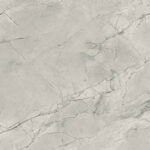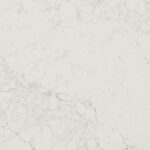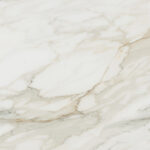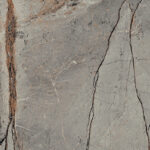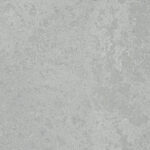5 min read
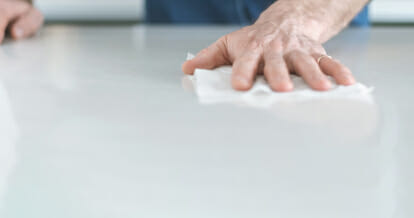
Tips to Eliminate Kitchen & Bathroom Bacteria
Bacteria are everywhere. They are unavoidable. No matter how clean an area is, a certain number of bacteria are likely to grow on almost any surface, but that’s not necessarily a cause for concern. Some of these microorganisms are even good for us—take, for example, the probiotic microbes that promote a healthy digestive tract and boost the immune system. However, some are pathogens, meaning they can cause disease. The presence of these bacteria facilitates the spread of colds, the flu, and other illnesses. As a result, awareness of where these germs live and thrive and how to combat them is essential to maintaining the healthy home that you and your loved ones deserve.
A Scientific Study on Bacteria
A study conducted by NSF International tested 22 households and discovered a variety of bacteria, everywhere from the floors and walls to the sink and countertops. Most of the germs discovered were harmless. Their study also revealed that homes with pets tend to contain more diverse species of bacteria. Water leaks were found to produce a high level of fungi. Refrigerator doors and toilet seats were two of the most popular surfaces for bacteria to thrive.
Common Kitchen and Bathroom Bacteria Locations
We’ve established that germs are everywhere, but realistically, we cannot clean every spot on every surface of our homes. That’s why it’s good to know the most common places where illness-causing microorganisms live. Here are the top five, according to Today.com.
- The kitchen sponge: Bacteria love moisture, especially the coliform bacteria. Kitchen sponges and bacteria go together. It has been found that as many as 15% of kitchen sponges also contain salmonella.
- The kitchen sink: This area is germ-filled. With raw meat rinsed and residue of multiple other food items deposited, living organisms enjoy the wet environment here.
- The cutting board: This surface comes in contact with plenty of food sources, including raw meat, so expect germs to reside on this surface.
- The refrigerator door handle: With possibly the most popular door handle of the house, the fridge gets opened and closed multiple times per day in most homes. With all these touches and occasional sponge swipes, this spot is a breeding ground for E. coli, salmonella, and other pathogens.
- The kitchen counter: This surface sees a lot of action, from food prep, food and drink spills, splashes from the dirty kitchen sink, to contact with the kitchen sponge.
Clearly, bacteria in the kitchen is a common challenge. But the kitchen is not the only breeding ground for nasty bacteria to thrive.
Bathroom areas are also popular places for bacteria to grow as well, and it’s not just the toilet seat. Just like in the kitchen, the counters and the sink are problem areas. As bathroom sink bacteria splash onto countertops, the toothbrush holder and toothbrushes easily become infected too.
How to Eliminate These Bacteria in Your Home
All this germ talk can feel overwhelming, but it doesn’t have to be. Tackling the tough areas of your home requires a little planning and a commitment to maintenance. Start by surveying where the highest traffic areas are in your home. Keep those surfaces clean with vacuuming, sweeping, and where appropriate, soap and warm water. For surfaces that can tolerate it, including the toilets, a quick disinfectant can be made by preparing a bleach solution diluted according to the manufacturers’ instructions.
Then it’s time to attack those top five mentioned earlier:
- Kitchen sponges and dishcloths should be soaked in a bleach solution diluted according to the manufacturers’ instructions, two or three times a week.
- The cutting board should be scrubbed with warm soapy water after each use and allowed to air dry before being put away. For extra precaution against bacteria, pour a highly diluted bleach-water mixture over the surface and pat dry with a towel.
- Wash the kitchen sink bacteria away with hot soapy water after each use and wipe down with an antibacterial wipe once a day.
- Use paper towels to wipe down spills to reduce contamination.
- Wipe down kitchen counters and the refrigerator door handle once daily with antibacterial wipes as well.
Don’t forget to wash your hands often to minimise transfer to other areas of the house and the bacteria entryways into your own body. Every time you touch your face with dirty hands, you are at risk of infecting yourself with dangerous pathogens.
Quartz Surfaces by Caesarstone
One of the greatest benefits of updating to quartz surfaces throughout your home is their ease of maintenance. The non-porous surfaces will not hold onto bacteria the way other porous surfaces (like granite and marble) do, and germs can be wiped away easily and quickly with little daily attention. The hard, non-porous surface makes Caesarstone simple to clean. In most cases, soap and water or a mild detergent is all that is required to maintain its lustre. Please note that Caesarstone finishes other than polished may require increased cleaning. Since there is more exposed surface area with these finishes, fingerprints and other signs of daily living will show on these materials. Visit our Care and Maintenance page to understand what can and cannot be used for cleaning quartz surfaces.
And while disinfecting is not a substitute for cleaning, the National Environment Agency of Singapore has recommended an interim list of disinfectants and cleaning products effective against Coronaviruses.
Watch this video below for Caesarstone quartz cleaning tips:













